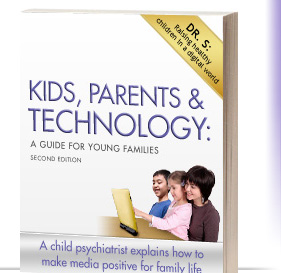BULLYING
Eitan D. Schwarz, M.D., D.L.F.A.P.A., F.A.A.C.A.P.
CLINICAL ASSISTANT PROFESSOR, FEINBERG SCHOOL OF MEDICINE
NORTHWESTERN UNIVERSITY
CHICAGO, IL
Copyright © 2002 Eitan D Schwarz. All rights reserved. This handout may be copied and distributed only for non-profit educational use.
THE BULLY
The bully is a predator who uses physical violence or verbal threats to frighten and terrorize. He dominates, degrades, and humiliates a victim to gain a sense of power, lessen his own fears and insecurities, and increase his own self esteem without regard to the damage he inflicts on his victim. Although he or she is usually a child, in some ways his cruelty and indifference to the suffering of others make the bully similar to terrorists and rapists. However, the bully differs from a terrorist by lacking a political aim and from a rapist by lacking sexual means.
A bully may suffer from cognitive or social deficits or an impulse disorder. A bully may have also suffered or witnessed damaging abuse, violence, or degradation and humiliation at home. Or a bully may be showing serious deficits in socialization that mark him as a future remorseless criminal.
THE OFTEN-BULLIED
Most children, especially boys, have been occasionally bullied but commonly cope successfully by avoiding, mollifying, ignoring, or standing up to bullies. However, the child who is bullied often or regularly requires identification and urgent attention from caregivers.
The often-bullied may be different in appearance, or odd, or small, or suffer from a physical, cognitive, or social skills deficit. Or he or she may be challenged or otherwise vulnerable in a way that makes other children uncomfortable. The bully may then maliciously exploit other children’s discomfort by leading them to pick on the victim, or he just reacts thoughtlessly to his own discomfort by tormenting the victim.
The often-bullied may also be an already depressed and withdrawn child. He or she may be excessively passive and suffer such low self esteem that he cannot stand up for himself. A depressed child is often a loner and has few friends or allies to protect him. Other children often judge harshly the depressed child who cannot have fun or participate with or respond to his peers in a socially mutually rewarding manner. Being bullied adds to the burden of the depressed child.
Whatever the cause, any often-bullied child can suffer chronic psychological injury, blows to his self esteem, humiliation, and anger from the ongoing violence of bullying itself. He can harbor frustration, helplessness, and rage and can become depressed.
Cumulative helplessness and anger can lead the bullied child to a major disaster when combined with other specific circumstances. Social and emotional isolation, poor social and coping skills, deficits in moral development and in appreciation of the value of human life, a paranoid orientation with little capacity to distinguish innocents from perpetrators, a strong self-righteous sense of entitlement of a chronic victim, poor parental supervision and involvement, and access to weapons without inner or external restraint in using them can explode violently as revenge in a school shooting.
IDENTIFICATION AND ASSESSMENT
Bullying is violence that can beget violence and should be taken seriously. It is not just “kids will be kids.” Bullying can begin in pre-school aged groupings of children. As children grow older, bullying becomes more serious and is increasingly concealed. It often comes to the attention of parents or school authorities, if at all, long after it has started because children become reluctant to snitch. Unfortunately, in some cultures, communities, schools, or homes, bullying is not merely too common, but is actually an established, well developed part of the social fabric.
Adults should be alert to detect it early so that both bully and bullied can receive urgent attention: Inappropriately uninhibited, lacking in empathy, attention getting, inconsiderate, arrogant, disrespectful, rule breaking, cheating, chronically poor academic motivation, or aggressive behaviors may identify some bullies. Decline in academic performance, increased absences, social withdrawal and lack of emotional contact and empathy, and sullenness and fearfulness may identify some often-bullied.
Commonly, neither bully nor bullied are considered popular by mainstream students, nor as mature productive citizens by teachers. Usually, bully and bullied are same gendered. Once identified, both bully and the often-bullied should be evaluated by qualified professionals immediately to assess their special risk factors and current needs. Families should always be involved in assessment and intervention. The often-bullied may require an assessment for depression and associated anger by a qualified professional.
INTERVENTION
Both bully and bullied often desperately need and crave increased positive attention at home, especially from the same gendered parent or other mentor. Both may benefit from after school or special school programming.
A bully is a violent predator who should always be stopped immediately and monitored closely. Clear and consistently enforced limits and appropriate consequences should always be quickly applied. Once assessed, the bully and his family can receive appropriate psychological help. A bully may need to develop increased social awareness and sensitivity to others, acceptable ways to increase self esteem and channel aggression, and an identity not based on aggression alone.
Ideally, the bully should be brought to a point where he understands his obligation to apologize meaningfully to his victim and actually does so without coercion (see APOLOGIZING). Older bullies may be asked to perform community service. Bullying itself can be a traumatic experience for the bully who experiences remorse, shame and guilt. Such bullies, who are also followers or act impulsively, are easier to treat and have a better prognosis. The bully who is a leader or deliberately cruel, or suffers little or no remorse, shame, or guilt, is much harder to rehabilitate and can be at very high risk for future criminality.
Assure the often-bullied child’s safety. He may need help to develop self esteem and to learn specific strategies to stand up for and protect himself. For general principles regarding coping with the violence. His other needs may include learning social skills or appropriate assertiveness or self defense techniques and their deterrent value. Depression may require treatment by a child and adolescent psychiatrist.
PREVENTION
Educating children and their communities and families about alternatives to violence, tolerance for diversity, compassion for the weak, and promoting opportunities for healthy moral and social development are other aspects of a general approach to preventing and intervening with bullying. Children should be taught that they have a right not to be hurt or injured by others.
Children should learn to practice social responsibility by reporting injustice or harm done to another. However, they should not be asked to be the sole sources of information or complaints about bullies because it is the obligation of adults to protect children and prevent violence by identifying and monitoring bullies. Because it takes considerable social judgment and maturity to weigh the social good of protecting others against the social bad of snitching, how to decide when to tell and when not to should be regularly and thoroughly explored and discussed as children grow older.
It is the responsibility of parents and school personnel to provide children with an environment that does not tolerate bullying or any other form of violence. Although revenge by bullying victims has recently received attention as a cause of school shootings, let us not forget that bullying is itself a common form of violence. Parents should think about their attitudes towards bullying and regularly query children about their exposure at school and in the community. Schools and communities should assess the pervasiveness and causes and review policies and procedures regarding bullying.



